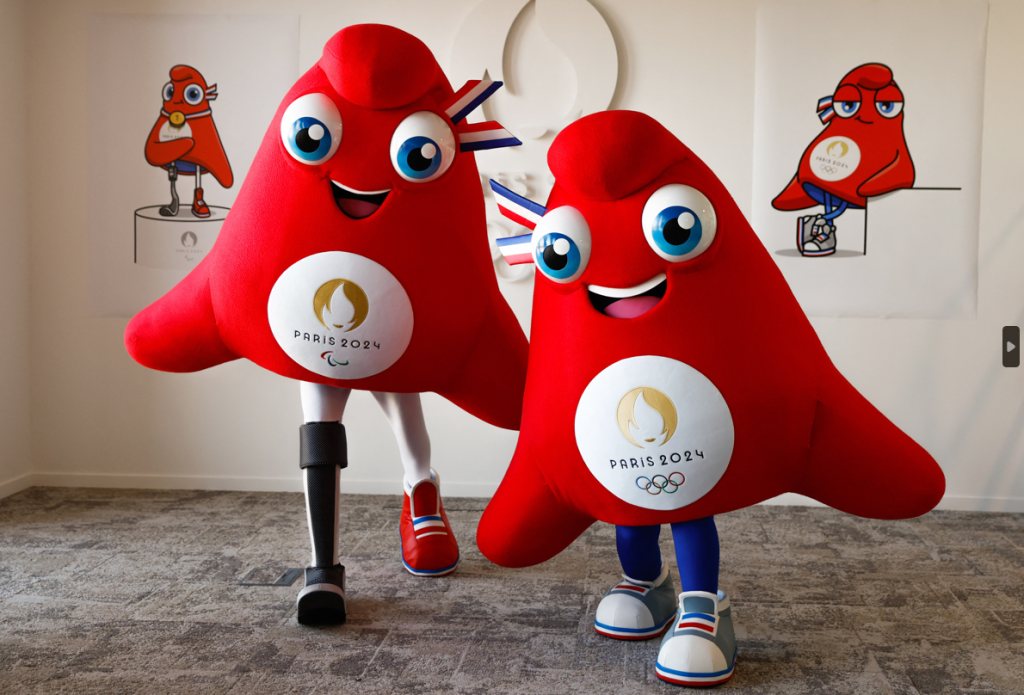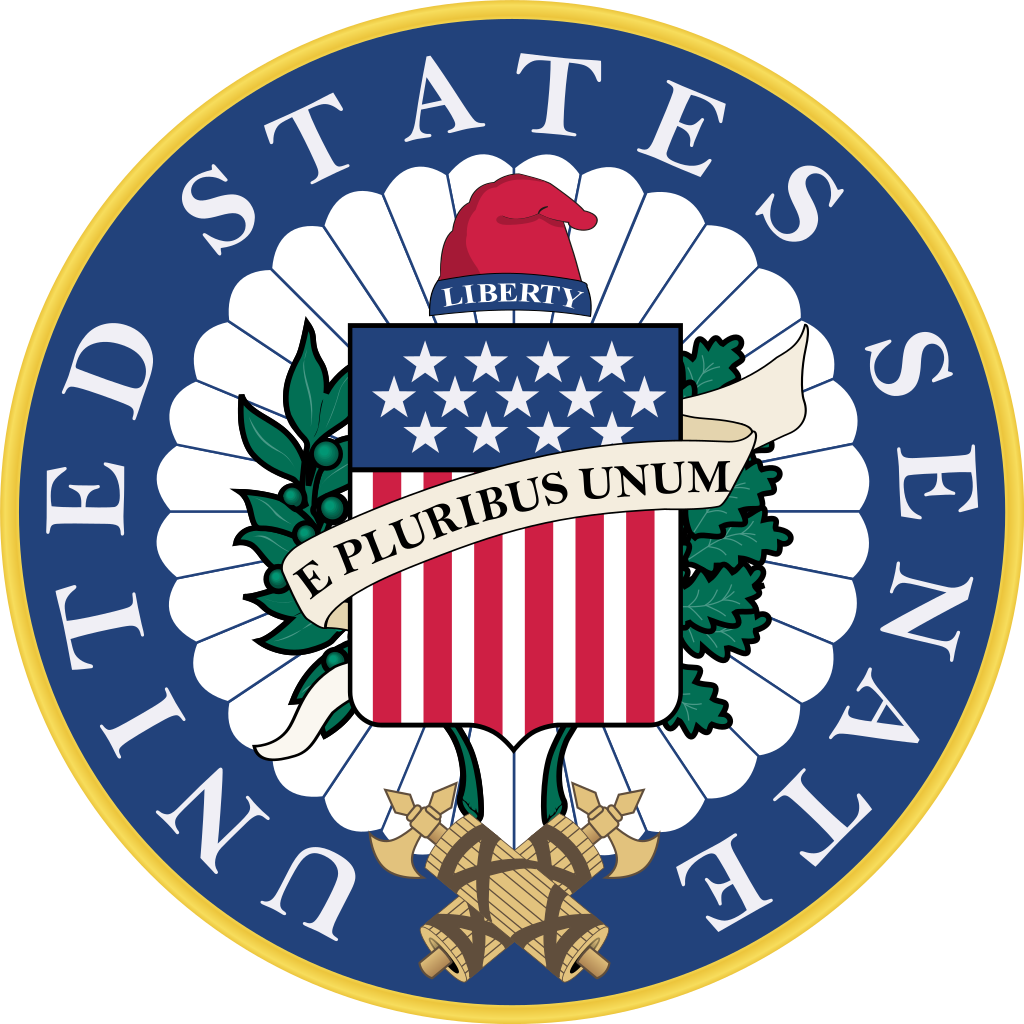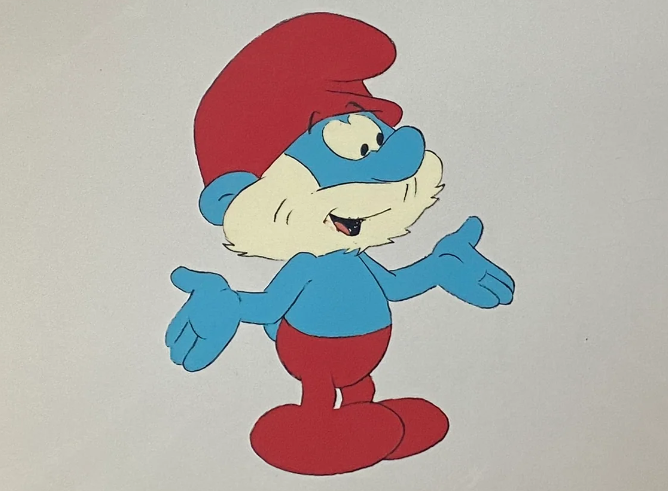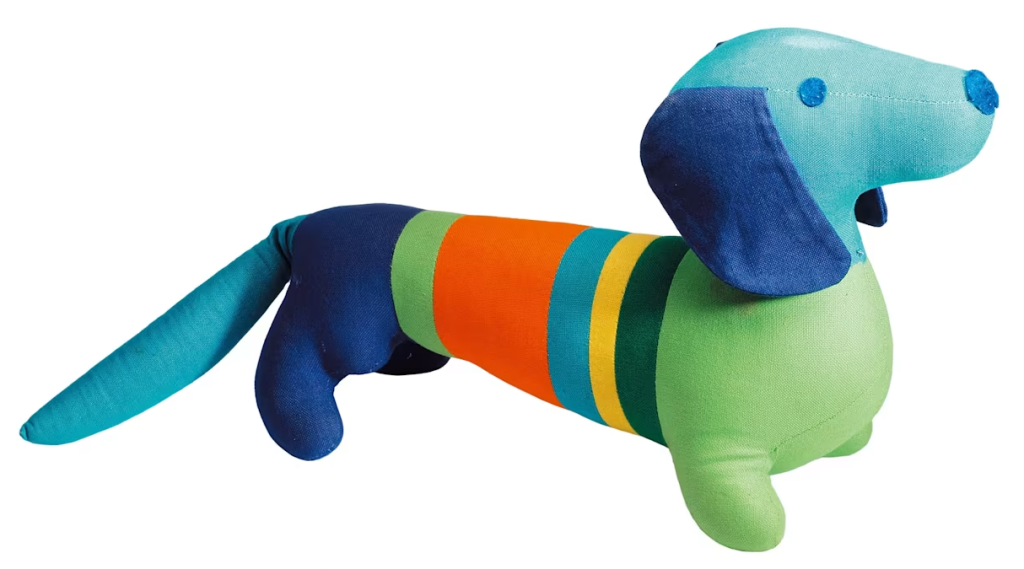It’s Not a Bird, It’s Not a Plane… It’s a Hat!
Hi!
Next month, the Summer Olympics is coming to Paris. Like all recent Games, this Olympics has a bespoke mascot, seen below with the Paralympics mascot. I’ve seen it here and there already, and until this week, I thought it was a bird. (It looks like a bird, right?)
But nope: it’s a hat.
Being the insatiably curious person I am, this discovery set me off down the rabbit hole of French hats, Olympic mascots, and more. In no particular order, here are some of the fun and interesting things I discovered.
The Phrygian Cap
They’re called the Phrygies, and their design is based on the Phrygian cap, which NBC describes as a cap “with deep significance in the history of France. The style of cap was adopted by the revolutionaries as a symbol of liberty during the French Revolution and has been a national staple ever since.” You can find the cap most famously in the painting titled “Liberty Leading the People,” which depicts Marianne, the national personification of France since the French Revolution. She’s wearing a Phrygian cap in the painting.
The cap isn’t originally French in origin but its association with freedom, liberty, etc. begins there. It doesn’t end there by any means. It appears on the coat of arms of many Caribbean, Central American, and South American nations, including that of Argentina, El Salvador, and Haiti (in blue). And it also appears on the seal of the United States Senate, below.
One last thing about the Phrygian cap: Marianne isn’t the only famous fictional character who wears it. So does this guy:
There’s something else on the Senate’s seal that’s interesting. See the axes in what looks like a bundle of bound sticks at the bottom? Those are called “fasces,” which, yes, is where the word “fascism” comes from. But don’t worry, the Senate isn’t making some sort of proclamation here — before the rise of Italy’s National Fascist Party, faces were a symbol of strength through unity. (I wrote about that about two years ago.)
Yep, that’s Papa Smurf. Peyo, the creator of the Smurfs, was Belgian, and he spoke French, so the fact that the Smurfs wear Phrygian caps (and Papa wears the red one) isn’t so strange. Want a fun fact about the Smurfs? Here’s an old Now I Know — June 2011! — but I apologize: I’ve ruined the surprise.
Oh, and before we go onto the other two topics I learned about in this Olympic mascot, one last thing about the Smurfs: they’re not fascists. They’re apolitical. How do we know? Because there was a tongue-in-cheek “conspiracy theory” that the Smurfs were secretly teaching kids about Communism way back when, and it got so out of hand that the company told Time Magazine that Peyo saw the characters as just apolitical fun. (The theory, in case you’re interested has three basic parts. First, it argues that each of the Smurfs have one skill — echoing the “from each according to their ability” part of a Marxist slogan. Second, Gargamel, the bad guy, is a failed alchemist only interested in gold, regardless of the means; he represents capitalism. And finally, and most ridiculously, is that “Smurf” itself is an acronym for “Small Men Under Red Father.”)
The Most Inclusive Olympic Mascot
The subhead directly above is wrong — it should read “The Most Inclusive Olympic and Paralympic Mascot,” because the Phyrges represent both of the Games. (By the way, “Paralympic” isn’t supposed to be a reference to “paraplegic.” As the International Paralympic Committee notes, “The word ‘Paralympic’ derives from the Greek preposition ‘para’ (beside or alongside) and the word ‘Olympic.’”) If you scroll back to the top, you’ll see that one of the Phryges has a prosthetic leg — she’s the one representing the Paralympic Games.
There are two notable points about the Paralympic Phyrge. First, she’s the first Paralympic mascot since the 1994 Winter Games to have a visible disability. And second, this is the first time ever that the two mascots have been the same basic character. Sometimes, they’re the same species — see the 2012 Summer Games mascots or the 2020 ones — but sometimes, they are entirely separate, as seen in the 2014 Winter Games.
I think the French committee got it right here.
The First Mascot … and the Nazis?
This has nothing to do with the Phyrges, but as you’d imagine, my curiosity went beyond them. I looked into the whole history of Olympic mascots.
The first unofficial Olympic mascot is from 1932, and it was a real-life dog named either Smokey or Smoky. He was a stray who hung out in the Olympic Village in Los Angeles as it was being constructed and probably would have been a TikTok meme if it happened today. His Wikipedia entry is short and not all that interesting. (His death is explained and it’s tragic and sad.)
The next Olympic mascot appeared in 1968, during the Winter Games. It’s name was Schuss and it wasn’t ever adopted as an “official” mascot, but organizers decided to sell Schuss pins and the like anyway. From what I can gather, it was just some random design that became popular, so much so that future Games (starting with the 1972 Summer Games) decided to have official mascots. The first official Olympic mascot, therefore, was Waldi, from the Munich Games. He was a dachshund, and here’s what he looked like.
Cute, right? But the color palette is odd. There’s a story.
The official motto of the 1972 Summer Olympics was “Die Heiteren Spiel,” or “The Cheerful Games.” The organizers were trying to drive that home with Waldi, going for a rainbow-themed dog. The Olympics website states that “The mascot features several different colors: its head and tail are light blue, with a striped body featuring at least three of the six Olympic colors.”
But… what about the other three colors? The six colors are a reference to the rings — “blue, yellow, black, green and red on a white background,” per the Olympics website. Omitting white from a rainbow makes sense, and I guess the same could be said for black. But there’s no red. The reason why? According to a defunct Olympics blog, “There’s no red or black in the Munich palette, a conscious decision on the part of [the designer] to not remind anybody of the primary colors of the long-defunct Nazi party.”
The Now I Know Week In Review
Monday: Flood For Your Right to Party?: A crime story, that probably wasn’t a crime.
Tuesday: Survey Says: Guilty: A crime story — that almost definitely was a crime.
Wednesday: E.T., The Extra Teenager: It’s rare that I find a story in my archives that I have no recollection of, but this (originally published in 2015) was one of those times. I still think it’s a good story, even if it wasn’t good enough for me to remember it.
Thursday: The Man Who Saved a Butterfly: Throughout this one, I called the plant the “California pipeline” … and it’s “pipevine.” Oops. Thanks to everyone who emailed me the correction.
And some other things you should check out:
Some long reads for the weekend:
1) “The Forgotten Hero of D-Day” (Politico, 14 minutes, June 2024). Reader Holly M. suggested this to me and I wish I had noticed it last week, closer to the anniversary of the event. Here’s the subhead: “Waverly Woodson treated men for 30 hours on Omaha Beach. But his heroic record that day became a casualty of entrenched racism, wartime bureaucracy and Pentagon record-keeping.” Thanks for sharing, Holly!
2) “Why You Can’t Get a Restaurant Reservation” (The New Yorker, 24 minutes, April 2024). First, let me say for the record that I’ve never had a problem getting a restaurant reservation, because where I live there are almost always enough tables, especially if you’re willing to be a bit flexible. This really is a New York City-specific problem (or in similar cities), not one hitting us in the burbs. As a result, the whole idea of a secondary market for restaurant reservations is amazing to me.
3) “The Magnet Fisherman’s Dilemma: What to Do With $70,000 Before It Disintegrates” (New York Times, 9 minutes, June 2024). This is a fun story with a nice ending. Here’s the subhead: “James Kane pulled a safe filled with stacks of hundred dollar bills from a creek in Queens. That, it turns out, was the easy part.”
Have a great weekend!
Dan




